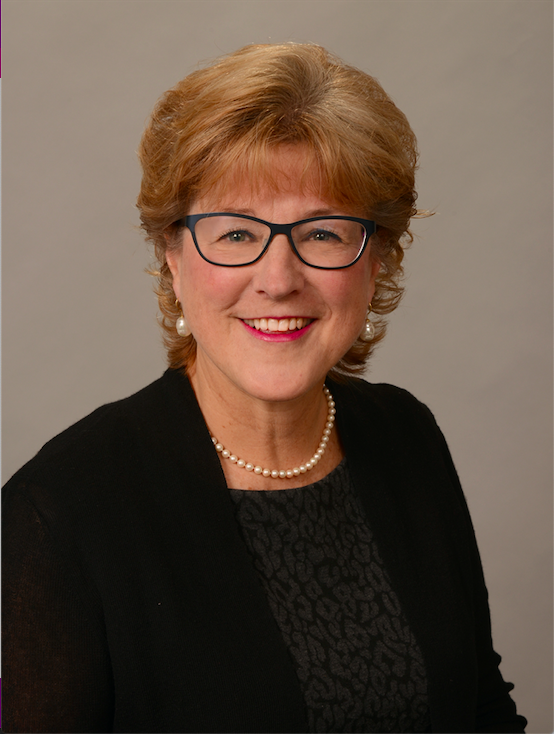Article
Endometriosis Is Common, but Challenging to Diagnose and Treat: Dr Ayman Al-Hendy
Author(s):
Endometriosis is a very common disease across ethnic groups and the economic burden can be substantial for women, said Ayman Al-Hendy, MD, professor of obstetrics and gynecology at the University of Chicago Medicine.
Endometriosis is a common disease that affects women regardless of their ethnicity and can cause severe pain that ultimately has a huge economic impact for the women affected, said Ayman Al-Hendy, MD, professor of obstetrics and gynecology at the University of Chicago Medicine.
Treating endometriosis is challenging because the diagnosis can take 7 years on average, he told The American Journal of Managed Care® (AJMC®).
In the first part of the interview, Al-Hendy discussed the economic burden of endometriosis, the health equity issues presented by the disease, and first-line treatment options.
AJMC®: What is the economic burden of endometriosis?
Al-Hendy: Endometriosis is a very common disease. For many years, it was considered to be more common in certain ethnic groups than in others. For example, the perception was that it's more common in European Americans than African Americans. And some said—because the other common benign gynecologic condition is uterine fibroids, and we know that they are much more common in African American—some people even teach students that fibroids is the Black woman disease and endometriosis is the White woman disease. There is no epidemiological evidence to support that whatsoever.
The most reliable epidemiological studies—from Donna Baird, PhD, from the National Institute of Environmental Health, and many other very good productive epidemiologists—have shown with high-quality studies that endometriosis is as common in the Black population as the White population. Fibroids, however, definitely is way more common in Black women.
But endometriosis is very common. The most common symptoms are pelvic pain and infertility. If you look at pelvic pain in reproductive-age women, about 10% to 15% of reproductive-age women between the ages of 15 to 50 years, actually suffer pelvic pain. It's very common, and most of those women actually do have endometriosis. As such, it's a very common disease with a huge economic impact, because if you're in severe pain, obviously that affects your quality of life, your family activity, your work, your studies if you're a student, and really, your competitiveness in society, in general. I would say it has a huge economic burden.
Also, many women start to self-treat with counter medication and so on. And if you really have significant endometriosis, that doesn't help a lot. So, that also add economic burden to the different families. And finally, I would say in terms of work productivity—time off work, sick leaves and so on—in the society or economic sphere as a whole, endometriosis and pelvic pain, also have a negative effect on that as well.
AJMC®: How can we change that perception when training new clinicians?
Al-Hendy: As educators, we work with medical students and obstetrics/gynecologist residents. We also have a minimally invasive surgery fellowship here at the University of Chicago. In terms of learners, we tell them the accurate data. We tell them the best facts we have. We share the best, most accurate data, the highest quality research data that show absolutely no difference in the incidence of endometriosis or even pelvic pain in minority women—African American, Hispanic American—compared with European American women.
However, there is a challenge out there. There is, I would say, some biases and perceptions. There is also that general bias out there that Black communities, in general, have a higher pain threshold. There is no evidence for that whatsoever. I think it's some of the inheritance from history, et cetera. I think we just keep drilling the facts and the research data showing that Black women perceive pain the same way as White women. The prevalence of endometriosis is the same in Black women compared with White women. And we have to acknowledge the fact that some other diseases like uterine fibroids have differences there. They are way more common—about 4 times more common—in Black women. But we shouldn't conflate different things together.
Now, fibroids and endometriosis coexist in many cases. Some studies show they coexist in up to 40% of cases. So, to be fair, that could be contributing to some of that confusion. But if you look at endometriosis, it's equally distributed in Black women compared with White women.
AJMC®: What is your treatment approach for a patient who presents with endometriosis? What clinical considerations are taken into account when you're deciding on a treatment plan?
Al-Hendy: That's a very important and practical question. How do you treat endometriosis? The challenge usually is that women don't come and say, “I have endometriosis.” They come and say, “I have pelvic pain.” And that's a major difference because there is a huge lead time from a woman presenting saying, “I'm hurting in my pelvis. I have pelvic pain. I have chronic pelvic pain. My periods are very painful. And sometimes I have pain even outside of my period,” and so on, versus giving a confirmed diagnosis of endometriosis.
So, this lead time or the downtime in endometriosis, unfortunately, it's very long. Some studies show the average is around 7 years. So, it's a huge delay. And the reason is, we don't have a very easy way to diagnose endometriosis. For example, with ultrasound, unless the patient has endometrioma, which is endometriosis in the ovaries making an actual cyst or a mass, the ultrasound is usually normal. If you have the common flat endometriosis all over endometrium, or deep infiltrating endometriosis, the ultrasound is usually normal. So, that doesn't help.
There's no blood test or a urine test like an actual biomarker we can measure to tell us that this patient has endometriosis for sure. There are some biomarkers that people use, but they are not very useful, like the CA 125. But the CA 125 biomarker, which is a simple thing you can measure in the blood, is elevated in many other conditions. Even just having your period actually can elevate your CA 125, as well as fibroids, pregnancy, et cetera. So, there many other factors. CA 125 as a diagnostic tool for endometriosis is not helpful, whatsoever. I don't use it, and I don't recommend using it.
Many patients come with pelvic pain, and they get diagnosed empirically that “Ok, the ultrasound is normal, but the pattern of your pain suggests that you have endometriosis. So, let's start treating it.” And the typical first line of treatment is the birth control pill given in a cyclic way every month or in a continuous way. The evidence that continuous birth control pill is better than cyclic is very weak, so usually, there's no difference. That is given with a pain killer.
I would say many of the patients who come and see me as a tertiary care center have already done that. The success rate, unfortunately, is very limited—probably around 20% or 25% gets some relief with that. Usually, I see the other 75%. They come and say, “I've been using this for 6 months, and I'm not getting better. So, I was sent to you.”
If they didn't have recent imaging, we confirm again with the imaging. An exam is very helpful—a good, thorough bi-manual exam. But if not, then we usually discuss the options. The options are either to do the most reliable diagnostic tool, which is a diagnostic laparoscopy to go in and look with the human eye and see if there's endometriosis. Or we can do the empiric treatment. Empiric treatment is to treat it as if it's endometriosis. If the patient gets better, then that's actually a diagnostic test that she did have endometriosis.
With the newly approved FDA-approved relugolix combination therapy, I'm really excited about that. It's done after thorough, high-quality, randomized, placebo controlled phase 3 studies. The patients in the study had documented evidence of endometriosis and microscopic evidence in the last 10 years. So, we know for sure they have endometriosis, and they had significant pelvic pain. And the results were fantastic in terms of relief of pelvic pain. I usually do that as empiric therapy, if the patient doesn't want to have that laparoscopy. If they get relief, that tells me that it is endometriosis. And then we carry on.
AJMC®: How long should a woman expect it to take for a treatment to provide effective relief? At what point do you move on to something else?
Al-Hendy: With birth control, even though it's the most prescribed first-line treatment, there's really no high-quality, randomized, placebo-controlled studies. For lack of better options, it became the law of the land, and that's usually the first line.
I would encourage practitioners and the patient, if birth control is not effective and if they don't get appropriate relief, which means really measurable improvement in the quality of life, to move on. The pain by itself is not the goal. The relief of the pain and how this improves your quality of life is the goal. I see patients who tell me, “I cannot do my job.” If they work in an office, “I cannot sit in a chair.” And they sometimes become very descriptive. “I feel like I'm sitting on something. Something is really hurting at the bottom of my pelvis.” Things like that. Or “I cannot take care of my children,” or “I cannot study,” “I cannot focus on the exam,” et cetera. So, that's when I tell them, “Let's try this medication, and then tell me how you are more functional. All of these things you describe, I'm going to ask you next time how much of that is better.” If that's not getting significantly better, and the patient tells you, “I don't feel that it's really helped me a lot,” I would encourage people to move on right after probably 3 months.
If you look at the biology of endometriosis, all these treatment options we talked about—whether birth control or oral relugolix with combination therapy—are hormonal. So, it probably will take up to that time: 10 to 12 weeks to take effect. I would give it a chance for 3 months, but if you don't get significant relief and improvement in quality of life and functionality, I would move on to the next one.


